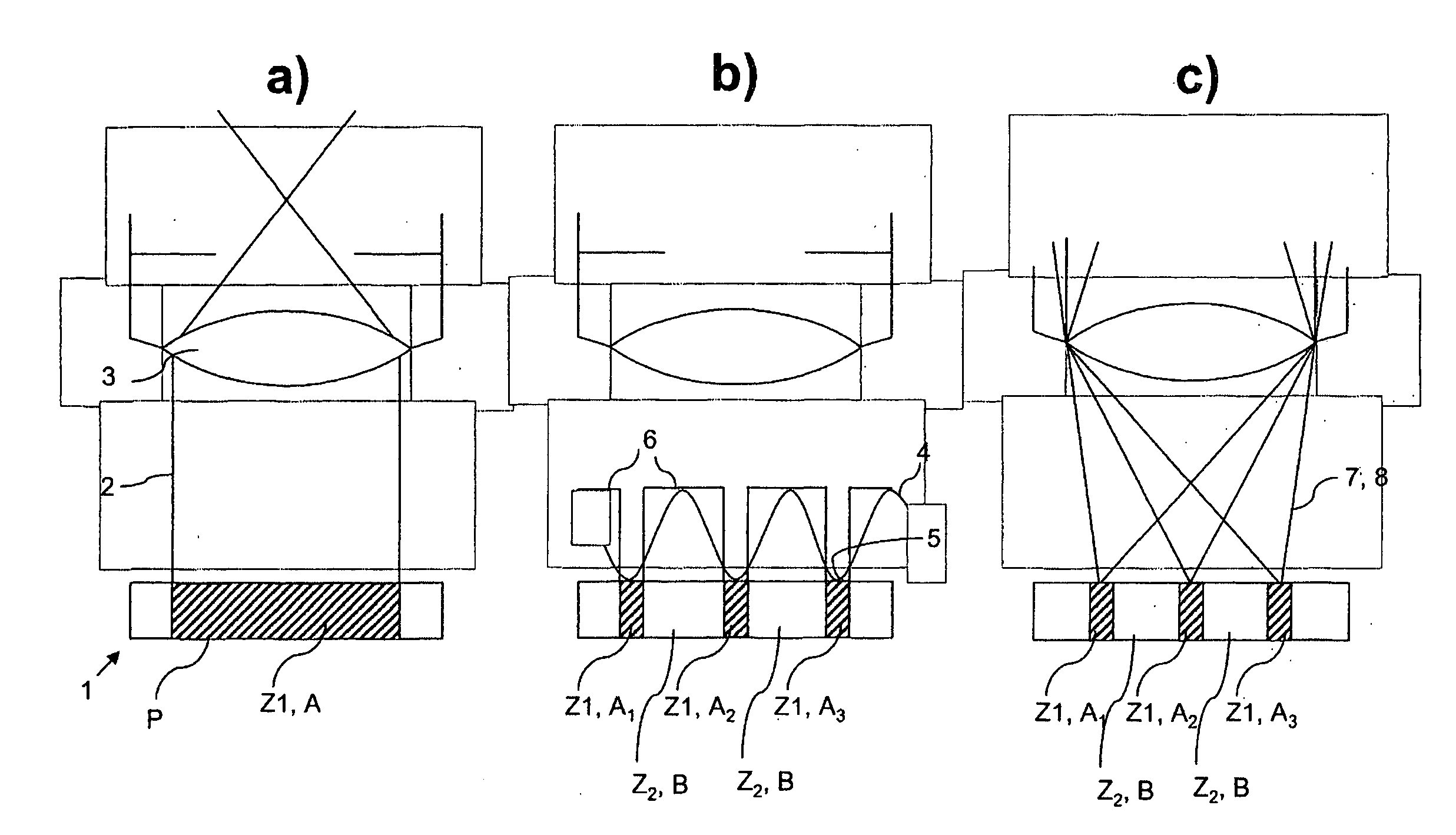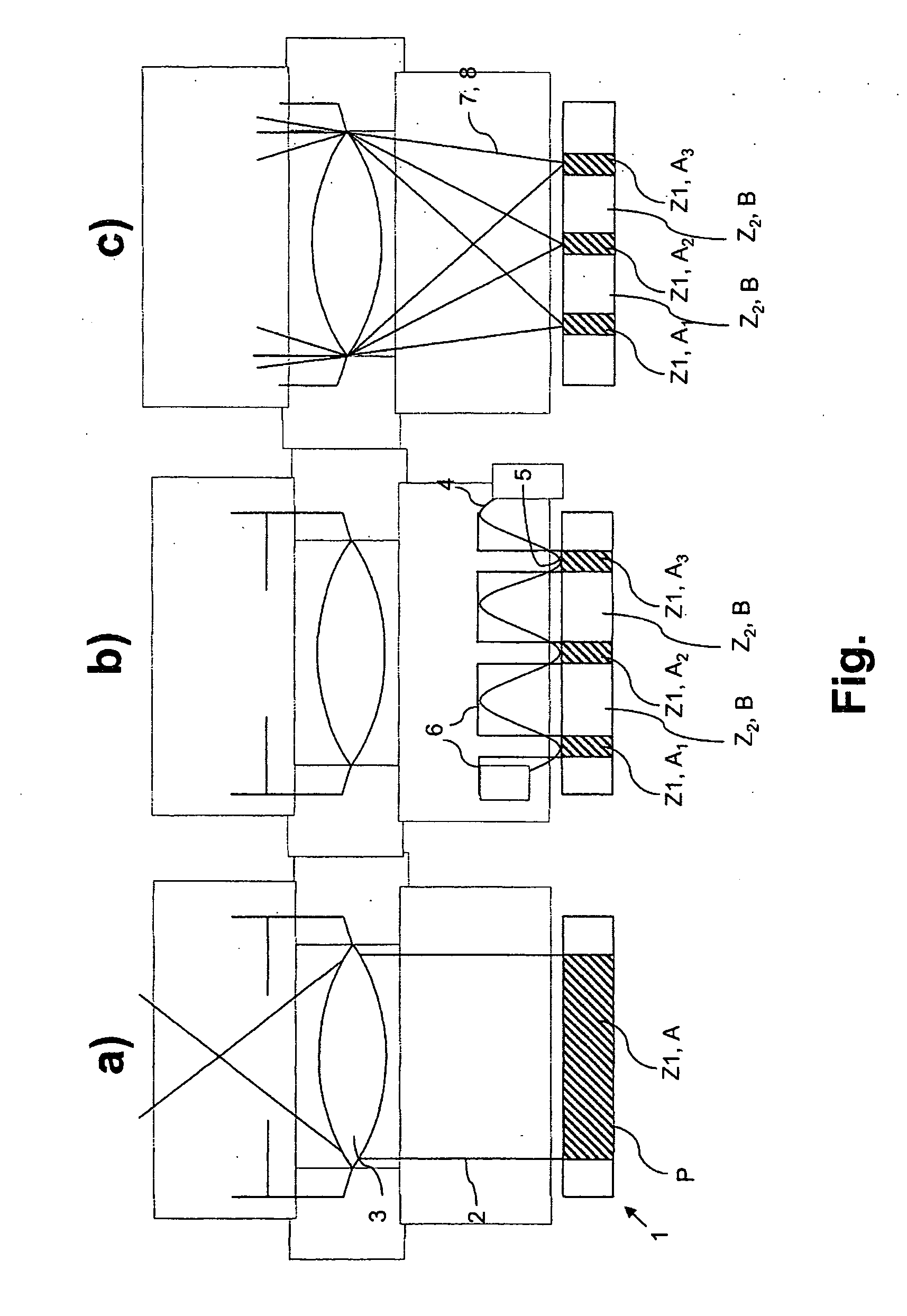Method for high spatial resolution examination of samples
a high spatial resolution and sample technology, applied in the field of high spatial resolution examination of samples, can solve the problems of significant reduction in resolution, limited irradiation time of individual signals during a cycle, and crosstalk that can have an extremely disadvantageous effect on the maximum resolution that can be achieved, and achieve the effect of reducing resolution
- Summary
- Abstract
- Description
- Claims
- Application Information
AI Technical Summary
Benefits of technology
Problems solved by technology
Method used
Image
Examples
Embodiment Construction
[0026]The sole figure is a schematic of steps a) to c) of a method such as is used for high spatial resolution examination of samples beyond the diffraction-limited resolving limit. In accordance with part a) of the figure, the first step is to use a switching signal 2 to bring into the first state Z1 in the entire sample space P to be recorded a substance that is provided in the sample 1 and can be converted repeatedly from a first state Z1 into a second state Z2, the first and the second states Z1, Z2 differing from one another in at least one optical property. In the exemplary embodiment illustrated in concrete terms, the first state Z1 is a fluorescing state A, and the second state Z2 is a nonfluorescing state B. In the example illustrated in concrete terms, the substance provided in the sample 1 is a photochromic substance whose molecules are brought into the fluorescence-capable state A by irradiation with light of a first wavelength, the switching signal 2. This happens ideal...
PUM
 Login to View More
Login to View More Abstract
Description
Claims
Application Information
 Login to View More
Login to View More - R&D
- Intellectual Property
- Life Sciences
- Materials
- Tech Scout
- Unparalleled Data Quality
- Higher Quality Content
- 60% Fewer Hallucinations
Browse by: Latest US Patents, China's latest patents, Technical Efficacy Thesaurus, Application Domain, Technology Topic, Popular Technical Reports.
© 2025 PatSnap. All rights reserved.Legal|Privacy policy|Modern Slavery Act Transparency Statement|Sitemap|About US| Contact US: help@patsnap.com


